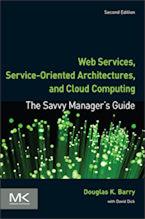Object-Oriented Database Management System (OODBMS) Definition
When you integrate database capabilities with object programming language capabilities, the result is an object-oriented database management system or ODBMS.1 An ODBMS makes database objects appear as programming language objects in one or more existing programming languages. Object database management systems extend the object programming language with transparently persistent data, concurrency control, data recovery, associative queries, and other database capabilities.
For more information, see:
- Transparent persistence
- Lack of Impedance Mismatch
- How to Access Data in an Object Database
- Navigation with an Object Database
Also: In September 2007, the Object Database Technology Working Group of the Object Management Group (OMG) issued a white paper that introduced the concept of an "object calculus" for ODBMSs that is analogous to "relational calculus" in RDBMSs: Next Generation Object Database Standardization.
1. Other initialisms used for object database management systems include: OODBMS, ODB, OODB, OODMS, and ODMS. They are also called "object-oriented database systems."
Context for Object-Oriented Database Management System (OODBMS) Definition
Related Articles for Object-Oriented Database Management System (OODBMS) Definition
Author
Douglas K Barry
Principal
You may use this material for your work or classes. Reprint Policy. Be sure to check the menu at the left for other articles available on this site.
The Savvy Manager's Guide
Douglas K Barry is also the author of a book that explains Web Services, service-oriented architecture, and Cloud Computing in an easy-to-understand, non-technical manner.
Web Services, Service-Oriented Architectures, and Cloud Computing: The Savvy Manager's Guide (Second Edition)
by Douglas K Barry with David Dick
This is a guide for the savvy manager who wants to capitalize on the wave of change that is occurring with Web Services, service-oriented architecture, and—more recently—Cloud Computing. The changes wrought by these technologies will require both a basic grasp of the technologies and an effective way to deal with how these changes will affect the people who build and use the systems in our organizations. This book covers both issues. Managers at all levels of all organizations must be aware of both the changes that we are now seeing and ways to deal with issues created by those changes.

